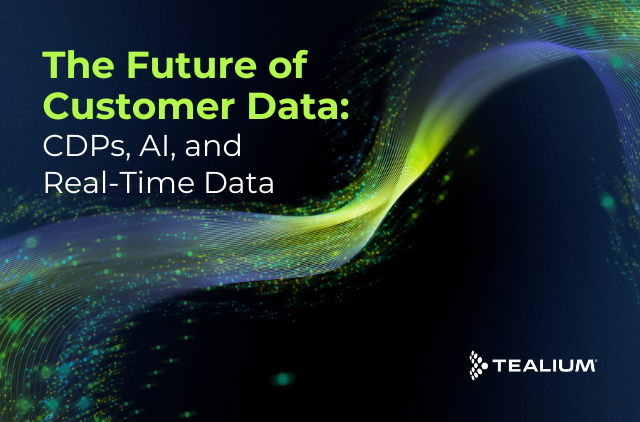The only certain things in life are death, taxes, birth (how does no one include this?), and gratuitous end-of-year predictions posts. Some are better than others, like Diginomica’s unpredictions, and then there are the predictions that ruin your career forever, like when Albert Einstein predicted in 1932 that “There is not the slightest indication that nuclear energy will ever be obtainable.” Totally tarnished his legacy.
Alas, I digress. This is one of those prediction posts, but instead of telling you things that are never going to happen but then totally do, let’s talk about the customer data conversations that will drive the work that marketers, analytics, IT, and privacy professionals undertake in the new year.
New Decade, New You, Same Problems?
With a new decade comes the promise of new possibilities. When it comes to how people are going to talk about customer data, the past is going to very clearly be prologue. In other words, the things that companies have been worried about the last few years will persist, but be amplified thanks to new laws, new consumer attitudes, and new technologies that will put further separation between data pioneers and laggards.
The big question of 2020 will be very familiar to people from 2019: do you trust your customer data?
Trust in data will manifest itself in several ways in 2020, which we’ll go into in more depth later on, but for the first-fold readers among us, here are some highlights from the last few years in the customer data landscape that are driving 2020 trends:
- Consumers don’t trust companies with their data. A Pew Research Center survey found that “Nearly 80% of U.S. adults are “somewhat” or “very” concerned about how companies use their personal digital data.” Our own research found that 97% (!!) of consumers are somewhat or very concerned about protecting their data, but that they’re generally trusting of brands they like— for now.
- Companies don’t trust their own data. According to research from Talend, only 11% of companies say they can provide trusted data in a timely manner. As the customer experience accelerates into new channels and new levels of personalization, the inability to deliver trusted customer data at speed will crush these efforts.
- New technologies, new forms of trust. AI and Machine Learning will bring new workflows and shift job priorities. PWC reported that the top concerns for executives around AI include the convergence of AI with other technologies, retraining employees, and ensuring trust in AI. As things change, creating new benchmarks to gauge the trustworthiness of new technologies will be necessary challenges to overcome.
Three Safe Data Predictions for 2020
The start of a new decade comes with the weighty responsibility of setting the tone for the next ten years. A look back to some of the pre-2010 predictions show that getting the tone and tenor of a trend is possible, but putting numbers behind it is… not a great idea. Take, for example, Gartner’s prediction in 2010 that worldwide mobile penetration would reach 90%. Currently, 41.5% of people in the world have access to a smartphone. Close enough counts for horseshoes and predictions, I suppose.
Thus, I offer you percentage-free predictions about the customer data trends that will define your year (and decade) to come.
Prediction #1: Concerns around customer data privacy will transform how companies allocate time, money, and responsibilities. And it will finally get companies to commit to personalization.
With the CCPA’s enforcement ringing in the new year on Jan 1, 2020, companies worldwide will have a new set of privacy standards with which to conform. The breadth of the CCPA’s rights for consumers, such as the right to transparency and deletion, will affect marketing, sales, customer service, and IT teams. The fact is that most companies aren’t prepared for the CCPA.
Companies affected by the CCPA will need to have the time and money budgeted to invest in their customer data supply chain. With 45 days to respond to requests, there will be tight timelines for companies to work with. The threat of private action, a right enshrined in the law, will compel companies to adapt their processes and technologies to the law quicker than they did with the EU’s GDPR, which has a notoriously low adoption rate.
With companies investing in their customer data supply chain to comply with CCPA and other privacy regulations, they’ll also have the foundation for a legit personalization initiative by making first-party data a priority.
Prediction #2: But first, the widespread CCPA opt-outs will lead to a mild panic over personalization efforts.
There’s a lot of speculation about how consumers will react to their newfound rights, but some are estimating opt-outs to be as high as 87%. But as no one says anymore, the proof of the pudding is in the eating. We won’t know until CCPA takes effect what the number’s going to be, but with so many people choosing to opt-out of the sale of their data, this will place the role of third-party customer data into question for many organizations.
As a result, some teams whose personalized marketing efforts rely on third-party data will start to feel the strain. But, as mentioned above, companies who adapt to the laws and foreground privacy and customer data control can turn this into a long-term win. The net result of the CCPA will likely be a heavy investment in first-party data as an asset.
Prediction #3: Machine learning and AI initiatives will increase greatly this year, but so will the need for data quality initiatives.
In 2019, 37% of organizations had deployed machine learning or artificial intelligence in some form, according to Gartner. As more technology vendors invest in machine learning as part of their offerings and the technology is entrusted to do more, organizations will realize that their data maturity and quality will limit the value offered. Bad data means bad machine learning.
A global survey from Forrester on the level of data maturity within organizations found that just a sixth (16%) of the companies studied were categorized as ‘pioneers’ for overall customer data management, meaning they are able to analyze data in real time at the point of customer interaction, leveraging insight based on strong infrastructures that make insights actionable.
As companies see that machine learning is a viable— and necessary— part of a company’s customer data future, they’ll have to reconcile this with their current data maturity level. Organizations who want to see the ROI on machine learning will simultaneously invest in ensuring the customer data quality improves markedly next year.
A CDP Can Change the Conversation
Providing trusted customer data is one of the things at which Customer Data Platforms excel. In particular, the data-first CDPs that prioritize the quality, governability, and auditability of data are built to solve many of the trending issues that will define 2020, including
- Reservations about the quality or completeness of data being used to fuel the tech stack
- The quality of data being fed into machine learning initiatives dealing with customer data
- The need for a governed, customer data supply chain to better handle the demands of new privacy regulations
If you’re looking at these predictions and nodding your head, it may be time to see what a data-first CDP like AudienceStream can do for your organization in 2020. If you’re shaking your head fervently, you can tell me why on LinkedIn!







